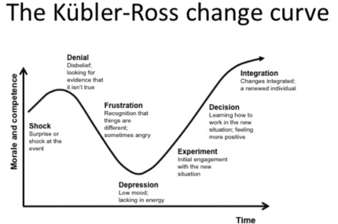How to Lead and Manage a Remote Team
Ten2Two has been active in the remote working sector since 2007, when remote leadership was used in relatively few situations and by a minority of companies.
Today, thanks to the pandemic, all managers are now faced with the challenges of remote leadership.
Some have been thrown in at the deep end with little or no experience or support, others have loved it and seen enormous benefits both for their team and their company and many just can’t wait to get back to “normal”, whatever that now is.
What is remote leadership?
There are lots of different business leadership models and styles ranging from the traditional authoritative, knowledgeable figure to the more collaborative and engaging approach that focuses on the empowerment of individuals and teams. They all have a common element: the ability to build and drive a team to perform and reach a common strategic goal in line with the company’s vision and values. Remote leadership is no different.
What do good leaders do?
Leaders engage, motivate, empower, coach, communicate, feedback, empathise, influence, collaborate, inspire and get results.
Most importantly, they build trust by connecting with people’s minds through a common objective, empathising with people’s hearts by understanding their motives and developing people’s competencies through individual and team performance and results.
How is remote leadership different to in-office leadership?
The thing to remember about remote leadership is that the fundamentals of leadership are the same whether you are in the office or leading remotely. It’s just that the location that has changed and good management can make all the difference and allow you and your team to reap the benefits of remote working.
There are 5 areas where we think managers should focus on when leading remotely: trust, communication, engagement, empathy and recruitment.
1. Trust your remote team
Leaders still need to continue to lead and get results at a distance. However, common feedback for leaders from successful home and agile workers is to avoid micro-management. So you really need to trust your team to deliver against their objectives. Discuss and set expectations and ground rules. This includes things like hours, availability, how to communicate, how they will set their boundaries and how you will respect their boundaries.
Remember if you trust your team they will continue to perform, but they don’t necessarily need to be present at a desk in an office to perform. As a remote leader, one of the essential things to remember is performance over presence, outcomes over inputs. Deborah O’Sullivan, Managing Director at Ten2Two says in an article on presenteeism:
Presenteeism assumes that the hours of work are more important than the output and productivity of an employee. And that simply isn’t the case. We know that organisations that focus on the quality of the work rather than the number of hours a person is sat at their desks find that they can retain valuable talent, boost employee engagement and improve staff morale overall. And that leads to a better workplace altogether.
The lack of face-to-face supervision can be a challenge for both leaders and employees. Leaders may think their team will work less or be less productive, but in our Ten2Two experience, we often find the contrary with remote teams. Employees who work from home or remotely often are very happy employees as they have a better work life balance and spend less time commuting. Many companies actually see an increase in productivity as employees take less coffee breaks, chat less with colleagues and take shorter lunch breaks.
2. Change how you communicate
Good leaders need to communicate by ensuring continued flow of information and sharing of knowledge to encourage new ideas and thinking. To make this happen remotely, new tools and tech become more important and remote leaders need to set the example by getting on board with the tech. The unexpected shift to remote work increases the pressure on leaders to ensure their teams stay aligned, are connected and get the job done.
Email is not enough and you may, like many, have to learn how to Zoom, Skype, Webex, Google Meet or Hang out. There are also useful shared chat apps and tools that help remote teams collaborate, share documents and stay productive like Slack and Microsoft Teams that also allow for video meetings.
OverCommunicate
Whatever tools you choose, if you are leading remotely for the first time and in a crisis situation like what we are experiencing with the Coronavirus pandemic, you really need to over communicate in the early stages by checking in (not checking up!) regularly with individuals and your team.
You probably already have 1:1’s with your team members but these become even more important, so make sure these are scheduled and protect them in your diary. Call or video call your team member and specifically discuss their environment and how are they getting on. Is their current set up working for them? Do they need more tech support and tools?
It’s also important to continue to have team meetings. Schedule regular virtual team meetings which are a great opportunity for people to meet face to face and team virtual coffees offer the social interaction that many may be missing. It’s also an opportunity to share mutual knowledge among your remote team.
And, most importantly, be available. We found from the research that what’s most important is that when a team member needs their manager, they don’t want to have to wait a couple of days to discuss something. So do get back to your team member as soon as you can and show that you are supportive and in touch with your team’s needs.
3. Change how you engage
You can no longer follow the “In search of Excellence” 1982 Managing by walking around MBWA strategy, but you can start the 2020 Managing by Webcam (MBW) strategy. The principles are the same – be visible, approachable, listen and engage.
That informal chat by the coffee machine, that quick “Hello, how are you?” or “Thank you” and “Well done on that great idea!” as you casually walk around the office can be replaced by impromptu or daily “check-in chats” (not check-up chats), messages or video calls with individuals and the team. You want to avoid “out of sight, out of mind” creeping into your team.
Follow our top Ten2Two tips on engaging through remote leadership:
- Continue to boost morale by sharing best work practices amongst the team and highlighting things that are working well.
- Show virtual gratitude by saying “thank you” online and continue to reward and celebrate performance.
- Find new ways to encourage employee commitment to the values and mission of the company. You need to have a clear sense of long-term direction, even in the face of short-term uncertainty.
- Encourage your remote team to “disengage” at the end of the working day to protect their work-life balance (and yours!).
- Ask questions and listen to the answers. It sounds obvious but take a personalised approach. Some team members will be very good at this and won’t need very much management but others might need a bit of a push to keep motivated and feel supported.
- Remember to be aware of remote politics and give visibility to team members at the right time. Don’t forget to talk about the individual’s personal development and career progression.
- Keep a team chart close to hand just as a reminder to make sure you touch base with all the people in your team who are managing this change.
4. Change how you show empathy
Leaders are good at listening to what people are saying and observing what people are doing. The best leaders also take into account what their team are thinking and feeling:
What are your team worried about?
Are they feeling psychologically and emotionally detached from their place of work and their co-workers?
Are they feeling isolated or having cabin fever by being in just one place where they live and work?
Remember that many or all of your team may be new to this way of working remotely. You obviously want to retain them, make sure they continue to have a sense of “belonging” to the company and help them have a positive experience of change. If you’re affected by the change too, do share your feelings. That will encourage sharing of feelings across your team and everyone will feel there is an open culture for people to feel listened to.
Understand the Change Curve
 The Kubler Ross Change Curve can be an interesting tool to show the phases an individual may go through when facing a significant change of some kind. It was introduced in the 1960’s by a psychiatrist studying the grief process and has subsequently been adopted as a management tool to understand behaviour during change.
The Kubler Ross Change Curve can be an interesting tool to show the phases an individual may go through when facing a significant change of some kind. It was introduced in the 1960’s by a psychiatrist studying the grief process and has subsequently been adopted as a management tool to understand behaviour during change.
The thing that’s important about the change curve is to recognise that some people get stuck. They can often get stuck at the front end of the curve – shock, denial, frustration – or oscillate between moving through the curve and back to the beginning. So as a manager it’s really important that you try to recognise where your individual team members might be on the change curve, how they are feeling, so that you can coach in the correct way.
Understand your Team Personalities
Take time to understand the personality of your team members. If you haven’t already, propose that the team take a personality assessment like Myers Brigs or Firo-B. and you can encourage them to share this with you which again may help you understand some of their challenges. A recent Harvard Business Review article talked about for example how extravert remote workers may suffer more from social isolation than introverts.
You and your team are learning a new skill so you need to make allowances for that. Give feedback to your team and get feedback on yourself from your team so you can understand each other better.
5. Change how you recruit and grow your team
Remember in the current situation, recruitment may take longer than usual. Ten2Two can help you in the remote recruitment process by giving you access to our unique membership database of experienced professionals and managers who are ready to work remotely on a part time or flexible basis.
If you need help about interviewing candidates online, read our tips on interviewing job candidates by video or watch our 50-second video on video interviewing your next employee.
If you’ve already recruited a new team member who has joined you remotely, you may find some useful tips here on how to introduce a new employee.


 Back to resources
Back to resources 9 min read
9 min read








